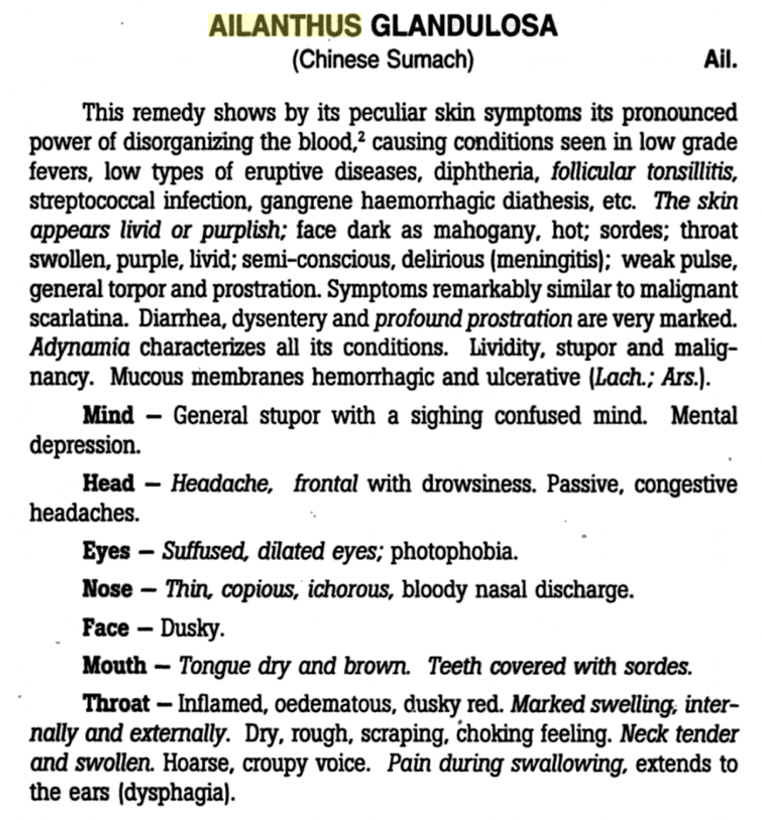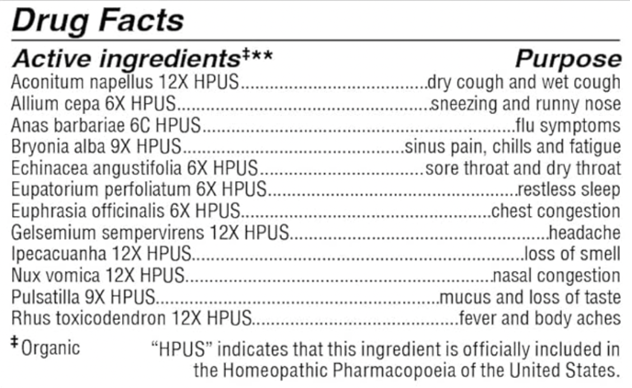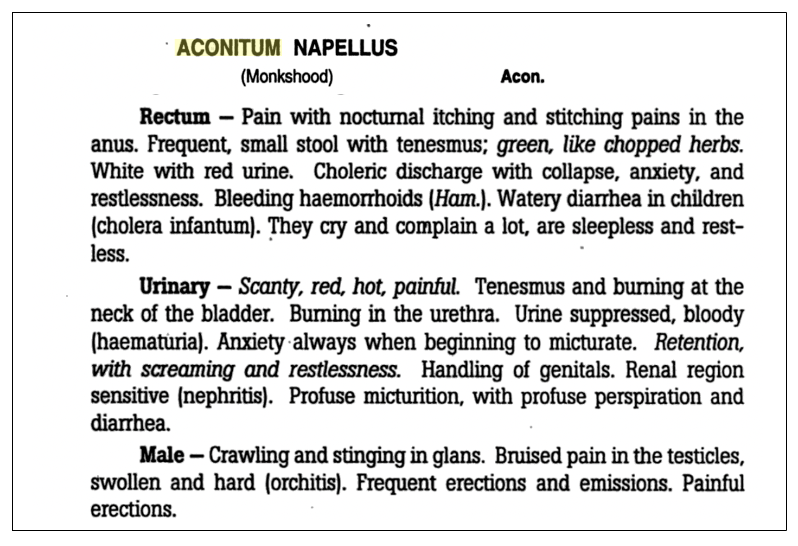What’s The Rationale Behind Homeopathy for Colds and Flu?
The ingredients in homeopathic products are present in tiny amounts. When a homeopathic product states on a label that an ingredient helps with a sore throat, that is based on the belief that in a more concentrated form the same ingredient causes a sore throat. The principle is: like treats like. And the basis is not scientific, it is historical and anecdotal.
If scientific support for homeopathy is lacking, what are the claims based on?
Homeopathy is based on strange books written in the 1800s and early 1900s that describe harmful effects of herbs and other substances.
For example, this excerpt from Boerike’s Materia Medica is said to describe the results of consuming Ailanthus glandulosa, which reportedly caused the throat to be “swollen, purple, and livid.”
Therefore diluted Ailanthus glandulosa is prescribed for a sore throat.
Materia Medica also tell homeopathic practitioners how much the substances should be diluted for use as medicines. They do not describe how the recommended dilutions were determined or provide evidence of efficacy.
Through a strange loophole, these books— including the HPUS, the Homeopathic Pharmacopoeia of the United States—are the basis on which the FDA allows homeopathic products to claim benefits for colds, sinus pain, fevers, and congestion.
But hasn’t there also been research on homeopathy?
You might assume that since homeopathic product labels have drug facts boxes and make claims for efficacy, that they have been the subjects of research studies and that the claims are evidence based. Some research studies have claimed to demonstrate benefits, but these studies have generally been carried out in ways that make them inconclusive.
It could be that further research will demonstrate benefits. The lack of evidence supporting particular uses of homeopathic products doesn’t necessarily mean that they aren’t helpful. But it does mean that for now the FDA is letting these products make unfounded claims.
The Data: Are There Demonstrated Benefits of Homeopathy for Respiratory Tract Infections?
Oscillococcinum® is a patented homeopathic medicine that contains a highly diluted extract of wild duck heart and liver. Since these organs may be reservoirs of flu viruses, this product may be vaccine-like. However, in a review of clinical studies to date, the authors concluded that there is not compelling evidence that this product prevents the flu or helps to treat symptoms.
After analyzing all of the published studies on upper respiratory tract infections, researchers concluded that homeopathic treatments were no more effective than placebo pills for upper respiratory tract infections in children and in children and adults, or for preventing recurring infections. Some studies reported efficacy of homeopathic treatments, but these studies tended to be flawed. The studies that were carried out more rigorously did not find benefits.
Here’s another example. Highly diluted Aconitum napellus is used for urinary tract pain because William Boericke wrote in his Materia Medica that Aconitum napellus caused burning in the bladder and urethra, in addition to many other adverse effects, a few of which are shown in this excerpt.
I scoured old Materia Medica trying to find rationales for the dilutions and evidence that diluted ingredients in present-day products are effective. What I found was statements about substances causing boils that erupted on the skin, plentiful green mucus, bleeding hemorrhoids, watery diarrhea, screaming when urinating, vomiting, and delirium.
I did not find documentation or description of the concentrated materials that caused these symptoms. I could not find any discussion of how the recommended dilutions of the materials were determined or evidence that diluted preparations were effective treatments.
While there is no need to deny people the homeopathic products they want, I would like to require better evidence of efficacy if these products are allowed to continue making the claims that they do.




